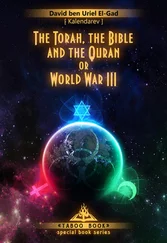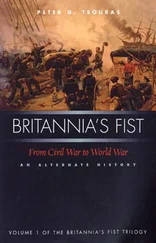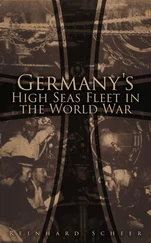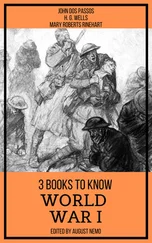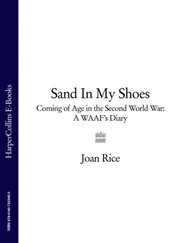29. Hopkins, Australian Armour, p. 30.
30. David Fletcher, The Great Tank Scandal , HMSO, London, 1989, p. 34.
31. The development chain for British cruiser tanks is described in Peter Beale, Death by Design, Sutton Publishing, UK, 1998, pp. 48 – 56.
32. Fletcher, The Great Tank Scandal , p. 4, and Beale, Death by Design , pp. 160–165. On 29 May 1940 a Tank Board was appointed. The terms of reference make it plain that the Board was regarded as a temporary body. It was required to ‘consider the whole situation regarding the production and design of tanks and to advise the Minister of Supply as to future action.’
33. Vyvyan Pope was a forceful and intelligent officer who had won the DSO and MC and lost an arm in World War I. In the battles in France in May 1940 he was advisor on AFVs to the Commander-in-Chief of the BEF, Lord Gort. Pope was able to see much of the armoured action at first hand, and to identify lessons to be learnt.
34. Beale, Death by Design , pp. 74 – 82. It is a characteristic of many military production projects that they omit some activities essential to the project and underestimate the time needed for all activities. In this case, the activity where the required duration was always underestimated was the field trial for the new tank.
35. David Fletcher, The Universal Tank , HMSO, London, 1993, p. 113. Comets were issued to 29 Armoured Brigade, the armoured component of 11 Armoured Division, but did not see action until after the Rhine crossing (23 March 1945).
36. NAA A2653 1940 vol. 1: Military Board Agendum 14/1940 ‘Army School of Mechanisation’.
37. Handel, Dust, Sand and Jungle , p. 9.
38. War Cabinet minute 262, NAA A5954 803/2 folio 183.
39. This meeting is recorded in War Cabinet minute 263 (see note 43).
40. War Cabinet minute 263, ‘The international situation and Australia’s war effort’, NAA A5954 803/2 folio 186-7.
41. War Cabinet minute 267 para 3, NAA A5954 803/2 folio 193.
42. Annex A to Full Cabinet minute 20, NAA A5954 803/2 folio 246-8, significant items are:
25-pdr guns — none
60-pdr and 6-in guns — a few
2-pdr anti-tank guns — none
anti-tank rifles — a few
tanks — none
carriers — very few
motor transport — bodies made locally, but engines must be imported
43. Handel, Dust, Sand and Jungle, pp. 47–50.
44. Ibid., pp. 49–50.
45. Both items of agenda are in NAA A2671. Each file contains many pages, and they are not sequentially numbered.
46. Fletcher, The Great Tank Scandal, pp. 11–13. This description contains clear line-drawings showing side, front, and rear elevation of the A13. The A13 is also described in Harris, Men, ideas, and tanks, pp. 298–299.
47. NAA A5954 804/1 Folio 265.
48. NAA A5954 804/1 Folio 276.
49. Major General Vernon Sturdee was promoted Lieutenant General and appointed Chief of the General Staff on 30 August 1940 following the death of General Sir Cyril Brudenell White.
50. Adrian Liddell Hart (ed), The Sword and the Pen, Crowell, New York, 1976, p. 6.
51. Beale, Death by Design, p. 35.
52. Ibid., p. 42 et seq.
53. In the Instruction issued by 21 Army Group in December 1944 The Armoured Division in Battle, the first section following the introduction is entitled ‘A few notes on tanks’. This section expresses Montgomery’s thoughts about tanks in his usual clear and concise style:
• A tank is an armoured vehicle designed to carry about fire-power; this definition, once understood, simplifies the problem of the employment of armour on the battlefield.
• The tank must have a really good dual-purpose gun, and mechanical reliability is a necessity.
• In 21 Army Group it is the policy to have only two types of tank: the capital tank (to fight), and the light tank (to reconnoitre). The term ‘capital tank’ means a dual purpose tank, suitable for working with infantry and also for operating in an armoured division.
• The aim is that all armoured brigades, whether in an armoured division or independent, should be equipped with the capital tank; they can then operate efficiently either in the role of infantry support or in that of a mobile strike force.
• The weight of the tank should not exceed 45 tons. Having selected the best possible gun as a primary weapon, and designed an engine with sufficient horse-power to give the required speed, then armour should be fitted to the maximum weight allowed.
Note: Monty’s ‘capital tank’ was subsequently called the Universal Tank and latterly the Main Battle Tank (MBT).
54. Their decision was recorded in War Cabinet Minute 375, NAA A5954 804/1 folio 276.
55. NAA A5954 803/2 folio 249B.
56. NAA A5954 804/1 folio 292. The minute notes that the provision of these requirements is to be related to the supply of AFVs noted in Minute 375.
57. For a report on the plane crash, see Gordon, An Eyewitness History of Australia , pp. 310–311.
58. Hopkins, Australian Armour , pp. 58–59.
59. NAA A5954 587/2, ‘Notes on history of tank production in Australia’ , para 4.
60. Quoted in D.P. Mellor, The Role of Science and Industry, Australian War Memorial, Canberra, 1958, p. 304.
61. NAA A5954 587/2 para 5.
62. NAA A5954 489/1, Report No. 5 by Director-General of Munitions, November 1940.
63. Hopkins, Australian Armour , pp. 36–37.
64. Ibid., pp. 331–339. Hopkins calls this proposal ‘The Cowra Paper’, because, at that time, he was stationed at Cowra in command of the 7th Australian Cavalry Regiment. This paper can also be accessed in NAA MP729/6 37/401/228. As well as the text of the paper in Hopkins, this NAA document includes four appendices with details of the division’s composition, equipment, and training. The output of the training schools is shown in timelines.
65. Gavin Long, Greece, Crete, and Syria , Australian War Memorial, Canberra, 1953, pp. 538–539.
66. NAA A2653 1940 vol. 4, Military Board Agendum 337/1940.
67. NAA A2671 Supplement 2 to War Cabinet Agendum 150/1940.
68. NAA AWM224 MSS 44 Part 14, ‘Land Headquarters AFV School, Puckapunyal, Victoria’.
69. NAA A2671 War Cabinet Agendum 150/1940.
70. S.J. Butlin, War Economy 1939-1942 , Australian War Memorial, Canberra, 1955, p. 224.
71. Ibid., p. 225.
72. Ibid., p. 227.
1. The three initial representatives of the Labour Party on the Advisory War Council in addition to Curtin were: Frank Forde, John Beasley and Norman Makin. See David Horner, Inside The War Cabinet , Allen & Unwin, Sydney, 1996, p. 213.
2. NAA A5954 805/1 folio 516.
3. NAA A2671 War Cabinet Agendum 150/1940 Supplement 2.
4. NAA A5954 489/1.
5. Hopkins, Australian Armour, p. 61.
6. See Gavin Long, To Benghazi , Australian War Memorial, Canberra, 1952, pp. 163–206; and Forty, The First Victory , pp. 134–150.
7. Chapman, Iven G Mackay, Citizen and Soldier , p. 187.
8. Ibid., p. 191.
9. Butlin, War Economy 1939-1942 , pp. 333–5. The political implications of the Conference are discussed in Paul Hasluck, The Government and the People, 1939-1941 , Australian War Memorial, Canberra, 1952, pp. 302–303.
10. NAA A5954 805/1 folio 574.
11. NAA A2671 WC Agendum 70/1941.
12. Fletcher, The Great Tank Scandal , p. 84. states that the Stuart II was the British designation for a US M3 Light with a Guiberson 9 cylinder radial diesel engine. Thus the Commonwealth forces were experienced in the use of this engine.
Читать дальше

